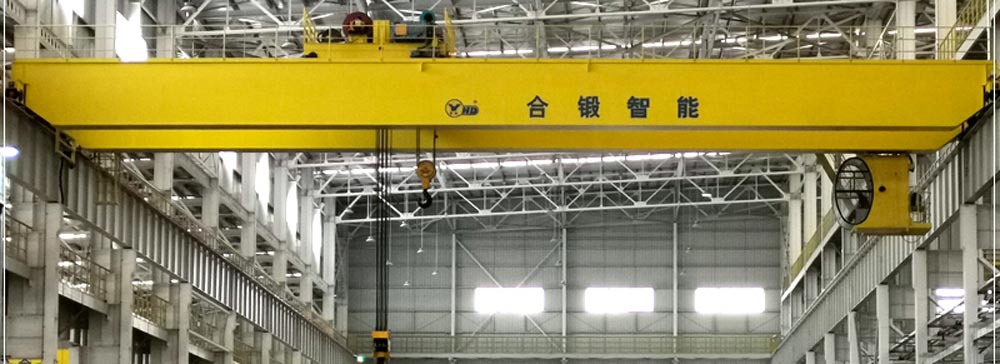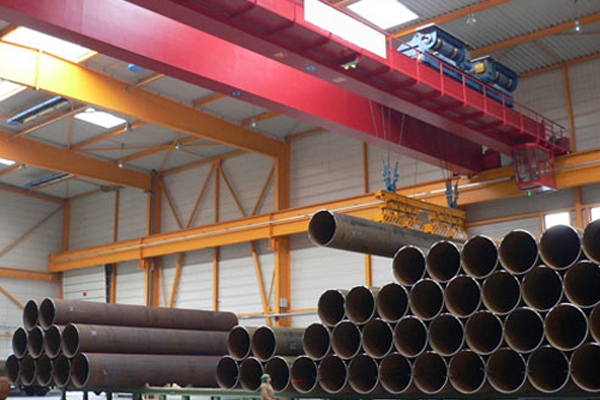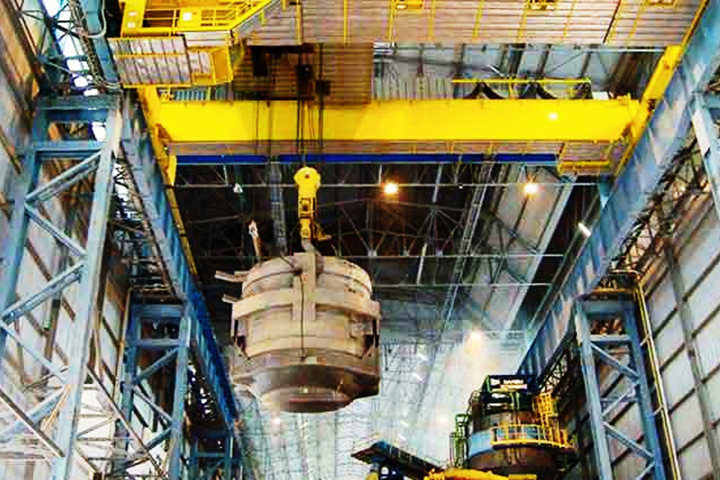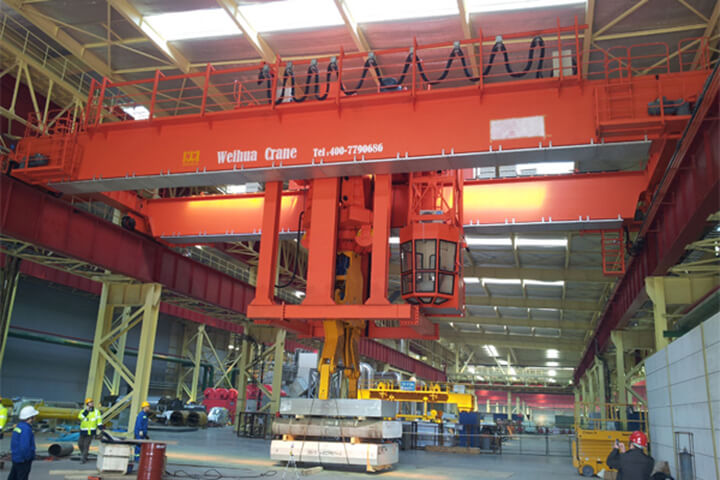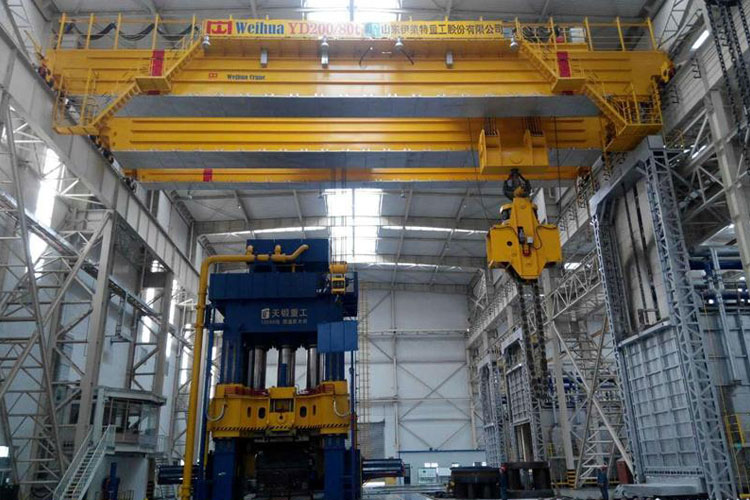Forging crane is a kind of bridge crane with special spreader, which is the main lifting equipment of forging workshop. It is used for lifting, buffering and overturning of forgings (large solid hot-melt metal), and forging and forming of moulded parts.
This bridge crane is equipped with a special lathe, and its structure can be a three-girder four-track structure. The 250-ton forged overhead cranes we produce meet the requirements of JB/T7688.1-2008, and adopt first-class processing equipment and advanced manufacturing technology to ensure the high performance and high quality of forged cranes.

Forging cranes are suitable for cranes used in special industries related to metal forging. As a leading crane manufacturer in China, we have 34 years of rich experience in the crane industry. No matter what type of crane you need, we can provide you with the best solution.
When the forging crane is working, the main and auxiliary hooks cooperate to lift the forgings, and the forgings are rotated by the special spreader. Adjust the forging to a suitable angle, put it on the cutting board of the hydraulic press, and the hydraulic press starts to work until the forging is forged into a qualified product. Since the crane will be subjected to relatively large shock loads during the forging process, it is equipped with a buffer device and a brake release device.
You can choose according to your needs, or you can consult our experts, we can provide you with the best solution for Forging Crane.


